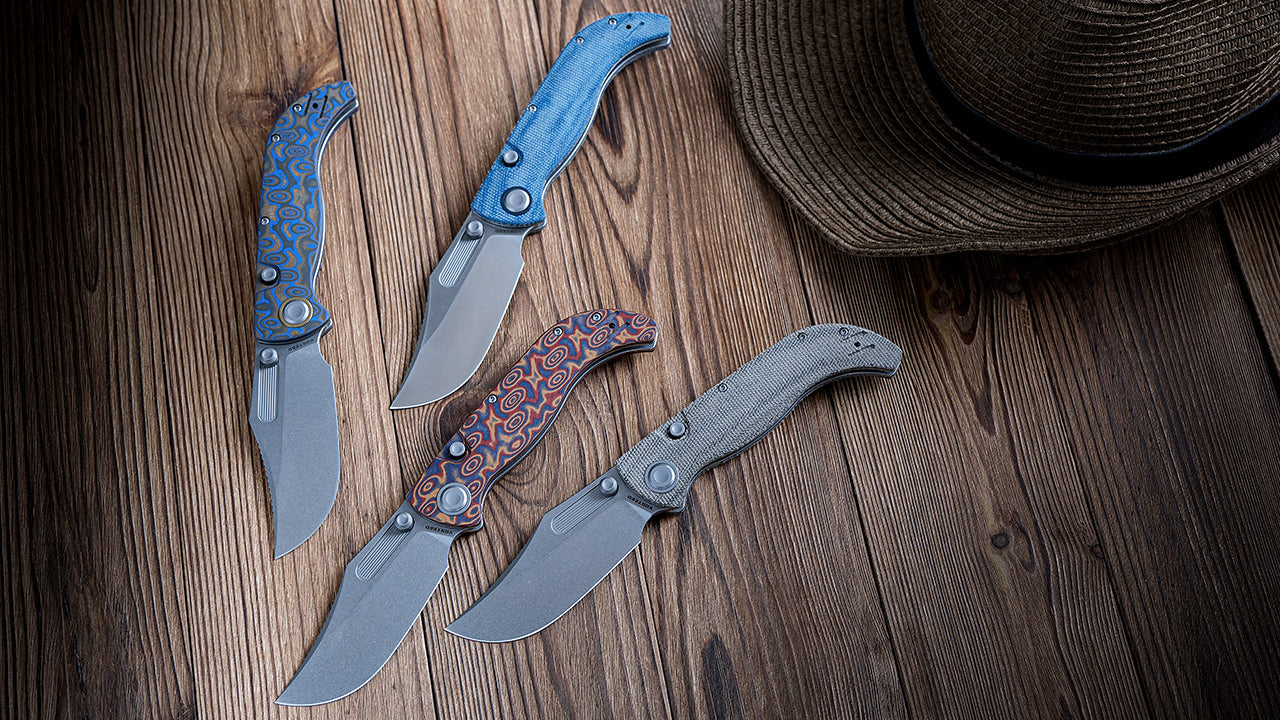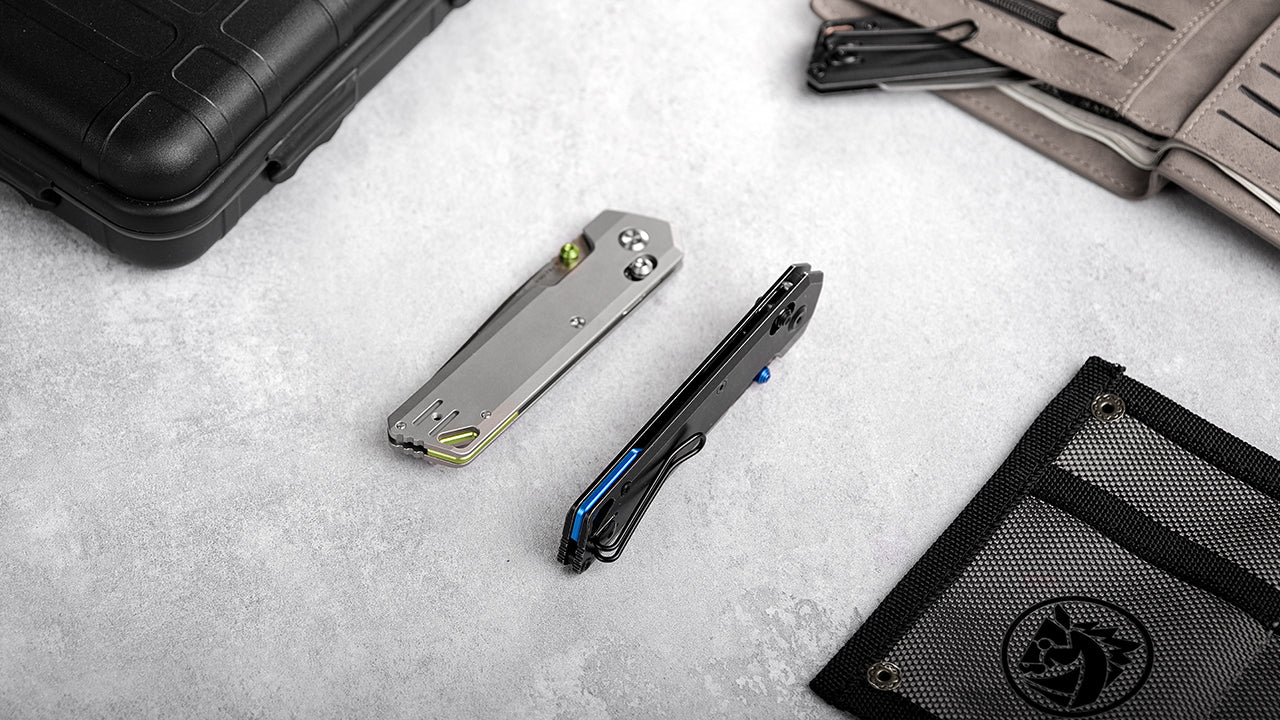What Are Navaja Knives?
Navaja knives are traditional folding knives from Spain. The word "Navaja" means “razor” in Spanish. People started using them in the 1600s when carrying swords became illegal for common people. At that time, many Spaniards needed a tool for both daily life and self-defense.
These knives became especially popular in southern Spain. Farmers, shepherds, and tradesmen carried them in pockets. They used them for cutting rope, food, or wood. But in street fights and duels, the Navaja also became a silent weapon.
Over time, this Spanish folding knife earned a strong reputation. Some styles became large, nearly the length of a forearm. Others were smaller and easier to hide. Many were handmade, passed from father to son.

The Unique Details of Every Traditional Navaja Knife
Every real Navaja knife shows clear signs of history and tradition. Knife makers in southern Spain developed these features over hundreds of years. Each part had a purpose, not just for looks but for real use in daily life and self-defense.
Folding Blade
The Navaja was one of the earliest large folding knives in Europe. The blade folds into the handle using a pivot pin. People in the 18th and 19th centuries liked this design because they could carry it hidden in a pocket or sash. The folding blade also made it easier to carry during travel or farming work.
Ratchet Locking Sound (“Carraca”)
One of the most famous features is the loud clicking sound when the blade opens. This comes from a notched locking system inside the spine. The clicks can range from 3 to 7, depending on the design. In the past, the sound served as both a warning and a sign of confidence. It told others that the knife was ready. The “carraca” was often a mark of quality and status.
Curved Blade Shape
Traditional Navaja knives have a slightly upswept blade. This shape helps when cutting with a pull motion. It was useful for slicing meat, rope, or cloth. Some versions, like the "Navaja de muelles," have a leaf-shaped or clip-point blade for better piercing ability. The curve was not just elegant—it improved function.
Decorative and Durable Handle
Knife makers often used local materials for the handles. These included ram or bull horn, olive wood, bone, and sometimes mother-of-pearl or brass liners. Some handles were carved with family names, initials, or local patterns. These knives were not just tools—they were personal items. Wealthier users sometimes ordered fully custom handles with silver inlays. The choice of handle material greatly impacts both aesthetics and functionality—if you're interested in exploring different handle options for your own collection, our comprehensive guide to knife handle materials can help you make an informed decision.

Slim and Tapered Design
Unlike short and bulky pocket knives, Navaja knives were often long and narrow. A typical traditional version could measure 20 to 30 cm (8 to 12 inches) when open. Some special fighting models reached up to 50 cm (20 inches). The slim shape made it easy to carry in a waistband, especially under traditional Andalusian clothing.
Manual Opening Without Springs
Most classic Navajas do not use springs. The user opens the blade manually until it locks into place. This keeps the design simple and strong. The ratchet teeth lock the blade step by step as it opens. A back spring may assist with tension, but it does not force the blade open. This system was reliable and did not break easily in harsh rural conditions.
Forged Iron or Carbon Steel Blades
Before stainless steel was common, Navaja blades were made from high-carbon steel or forged iron. These materials held a sharp edge well. However, they could rust if not cleaned and oiled often. Knife makers in cities like Albacete or Santa Cruz de Mudela were known for excellent blade forging. Some even added filework or stamps near the ricasso to show their maker's mark.

Why People Court Navaja Knives Today
Navaja knives are still loved around the world. People use them and collect them for many good reasons.
- For many Spaniards, owning a Navaja connects them with family roots. It reminds them of grandparents or childhood stories.
- Some knives are still handmade. These carry the feel of true craftsmanship. They show how a blade can be both useful and beautiful.
- Though old in style, Navaja knives still work well. People use them for camping, carving, or daily tasks.
- Because they fold and are not automatic, many Navaja knives are legal in places where fixed blades are not.
- Older knives from the 1800s or early 1900s are rare. Collectors search for these and may pay high prices.
- A Navaja knife often has a story. It may carry signs of past use. Scratches, worn handles, or marks make each one unique.
Where to Find a Navaja Knife Today
Knife collectors often trade or sell vintage Navajas through online platforms such as eBay and Etsy, where listings may include both antique and handmade Spanish folding knives. These platforms are useful for browsing a wide range of styles, prices, and conditions. In addition, knife forums like BladeForums offer a space where experienced users share buying tips, post detailed photos, and trade pieces directly.
In Spain, traditional knife fairs such as those held in Albacete often feature dedicated sections for Navaja knives. These events attract both collectors and artisan makers and are ideal for finding rare or high-quality examples not sold in stores.
Why Vosteed
If finding an antique or handmade Navaja feels too complex or costly, there’s another option. Many people today choose to buy modern knives inspired by the Navaja style. These knives keep the curved blade and folding design but use new materials and updated locking systems.
Take Vosteed’s Naga-Top Liner Lock, which is a nod to the classic Spanish Navaja. With a precision-ground S35VN blade, durable Norplex UltreX™ Micarta handle, and a secure Top Liner Lock, it brings heritage and engineering together in one refined package. The Naga offers dual deployment options, a rock-solid lockup system, and thoughtful details like a reversible pocket clip and CNC-machined controls. Whether carried for utility or collected for its design, the Naga delivers style, grip, and cutting performance without compromise.
Key Highlights of Vosteed Naga (A3902)
| Feature | Specification / Description |
| Blade Length | 3.47″ (88.10 mm) |
| Blade Material | S35VN stainless steel |
| Blade Style | Modified clip point with broad belly and fine tip |
| Blade Finish | Stonewash |
| Lock Mechanism | Top Liner Lock with independent stop pin for safety |
| Handle Material | Norplex UltreX™ Micarta (USA-made) |
| Handle Ergonomics | 3D-contoured profile with rear hook and forward finger choil |
| Deployment Methods | Thumb stud and milled finger groove (dual manual options) |
| Pivot System | Caged ceramic ball bearings for smooth opening |
| Carry Clip | Deep-carry, reversible, stainless steel |
| Overall Length | 8.04″ (204.30 mm) |
| Weight | 4.68 oz (132.60 g) |
| Special Touches | CNC-machined button and pivot, titanium-coated screws, dual jimping zones on blade spine |
For those who admire the tradition but want a reliable everyday tool, modern Navaja-style knives like the Naga are a smart and accessible choice.
Every Curve Holds a Legacy
The Navaja is not just a knife. It is a memory, a design, and a tool that carries meaning. From shepherds in the mountains to collectors in modern cities, the story goes on. And it keeps its edge.





Leave a comment
All comments are moderated before being published.
This site is protected by hCaptcha and the hCaptcha Privacy Policy and Terms of Service apply.